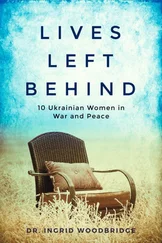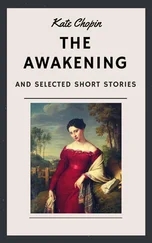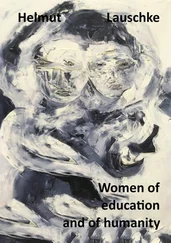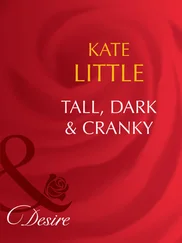Keith Grainger - Wine Faults and Flaws
Здесь есть возможность читать онлайн «Keith Grainger - Wine Faults and Flaws» — ознакомительный отрывок электронной книги совершенно бесплатно, а после прочтения отрывка купить полную версию. В некоторых случаях можно слушать аудио, скачать через торрент в формате fb2 и присутствует краткое содержание. Жанр: unrecognised, на английском языке. Описание произведения, (предисловие) а так же отзывы посетителей доступны на портале библиотеки ЛибКат.
- Название:Wine Faults and Flaws
- Автор:
- Жанр:
- Год:неизвестен
- ISBN:нет данных
- Рейтинг книги:4 / 5. Голосов: 1
-
Избранное:Добавить в избранное
- Отзывы:
-
Ваша оценка:
- 80
- 1
- 2
- 3
- 4
- 5
Wine Faults and Flaws: краткое содержание, описание и аннотация
Предлагаем к чтению аннотацию, описание, краткое содержание или предисловие (зависит от того, что написал сам автор книги «Wine Faults and Flaws»). Если вы не нашли необходимую информацию о книге — напишите в комментариях, мы постараемся отыскать её.
FLAWS
Wine Faults and Flaws: A Practical Guide
An essential guide to the faults and flaws that can affect wine
Wine Faults and Flaws — читать онлайн ознакомительный отрывок
Ниже представлен текст книги, разбитый по страницам. Система сохранения места последней прочитанной страницы, позволяет с удобством читать онлайн бесплатно книгу «Wine Faults and Flaws», без необходимости каждый раз заново искать на чём Вы остановились. Поставьте закладку, и сможете в любой момент перейти на страницу, на которой закончили чтение.
Интервал:
Закладка:
Table 1.1 Percentage (if over 2%) of faulty wines submitted for panel tastings in two leading wine publications.
| Category of wines tasted | Date | No. tasted | No. faulty | % |
|---|---|---|---|---|
| Publication: Decanter | ||||
| Affordable Rioja | March 2020 | 183 | 4 | 2.2 |
| Priorat | November 2019 | 82 | 2 | 2.4 |
| Rosso di Montalcino | September 2019 | 93 | 2 | 2.2 |
| Value Douro Reds | July 2019 | 76 | 2 | 2.6 |
| South American Premium Red Blends | June 2019 | 98 | 3 | 3.1 |
| Chilean Sauvignon Blanc | October 2018 | 62 | 2 | 3.2 |
| South American Cabernet Franc | October 2018 | 44 | 1 | 2.3 |
| Gualtallary and Altamira Reds | October 2017 | 99 | 2 | 2.0 |
| New Zealand Sauvignon Blanc | August 2017 | 93 | 4 | 4.3 |
| Southern Rhône Whites | August 2017 | 96 | 2 | 2.1 |
| Piedmont Nebbiolo | July 2017 | 72 | 2 | 2.8 |
| Muscadet with extended lees ageing | June 2017 | 113 | 3 | 2.7 |
| Bordeaux Crus Bourgeois | April 2017 | 203 | 5 | 2.3 |
| Publication: The Word of Fine Wine | ||||
| Historic Non‐Vintage Champagne | Q3 2019 | 44 | 3 | 6.8 |
| Brunello di Montalcino 2012 | Q2 2017 | 34 | 1 | 2.9 |
| White Châteauneuf‐du‐Pape | Q1 2017 | 44 | 1 | 2.3 |
| Champagne 2008 and 2009 | Q4 2016 | 53 | 2 | 3.8 |
| Savennières | Q2 2016 | 27 | 1 | 3.7 |
It should be noted that there were also several wine categories assessed when none, or less than 2%, of the submitted samples were found to be faulty. However, the price points for the wine types detailed are generally relatively high, and if consumers find their purchases to be faulty they might well feel particularly aggrieved when discovering that the product in their glass is not worth anything, let alone the price paid.
1.13 ‘Faulty’ Wines that Exude Excellence
There are many wines, particularly those at so‐called ‘entry level’ that are technically correct, fault and flaw‐free but which are distinctly uninteresting, dull, and by any set of values cannot be regarded as high quality. Such wines usually do not claim to express any regional identity, although they should be largely true to the characteristics of the grape variety or varieties named on the label. But how should we regard wines, often from small, artisan producers that are technically faulty, but which are complex, highly exciting and exude style and class and individuality? Our judgements are usually framework dependent, but excellence in wine, as perhaps in music, art, comedy, or literature can take us outside of our comfort zones where all aspects adhere to the rules. Breaking the ‘you can't do that’ norm may lead us into new territories that prove as exhilarating as they are disturbing. Nicolas Joly is a famous, perhaps even infamous, biodynamic producer in the Anjou district of France's Loire Valley. His family are the sole owners of La Coulée de Serrant, a seven hectare vineyard in the Savennières commune, which has its own Appellation Controlée (Protegée). He produces two other wines: ‘Le Clos de la Bergerie’, appellation Savennières‐Roche aux Moines, and ‘Les Vieux Clos’, appellation Savennières. He is noted for breaking many winemaking rules but produces award‐winning wines that have been described as amongst the world's best dry white wines, and yet which are regarded by some experts as faulty. He is revered by many wine lovers and reviled by many oenologists. Of course he believes great wine is ‘made in the vineyard’, and it is a straightforward task to turn wonderful grapes into wine. ‘What is a winemaker?’, he rhetorically asked me – ‘I don't understand the meaning of the word’ [personal discussion]. When describing a Nicolas Joly wine, the 2005 vintage of Clos de la Bergerie, Savennières‐Roche‐aux‐Moines, Lisa Perrotti‐Brown MW noted (in 2015) ‘ethyl acetate, acetaldehyde and high volatile acidity’ along with ‘beautiful, rich, mature fruit’ – she stated that ‘the wine tasted delicious’ [26].
1.14 Final Reflections
Many wine lovers express unhappiness because, coinciding with the technological and scientific advances of recent years, wines have become more standardised and globalised. Regional characteristics that were once so distinctive have very often become blurred. As Clark Smith states in his book Post Modern Winemaking , ‘replacing empirical systems with theoretical methods devalues hundreds of years of specific knowledge and practice, tending to bring a squeaky‐clean sameness to all wine’ [20]. To many in the industry, quality in wine may be defined as ‘an objective standard of excellence with the absence of any faults’. The drive of producers to produce ‘high‐end’, consistent quality wines has perhaps paradoxically resulted in real quality being compromised. Wine is an agricultural product, subject to the vagaries of all that the natural world can present which, of course, gives the varying styles and qualities of each vintage. So is total consistency really desirable or possible? Achieving consistency may require a good deal of blending and technical intervention which can negate the sense of place and individuality of the wine in the glass. In other words, to be consistent the peaks of excellence achieved in some vintages would have to be flattened or rounded down to a repeatedly achievable standard. The words ‘authentic’, ‘local’, ‘artisan’, and ‘natural’ can be music to the ears of those who seek aromas and flavours that are as exciting as they are unpredictable. Perhaps the odd flaw may add to this excitement, and the acceptance of the occasional fault is a price worth paying for such individuality. If we examine a work of art, or read a book, and judge it to be perfect, the chances are that on each subsequent visit we perceive a flaw or two. Maybe these do not detract, but raise questions and make us want to come back again.
References
1 1 Anderson, K., Nelgen, S., and Pinilla, V. (2017). Global Wine Markets, 1860 to 2016: A Statistical Compendium. Adelaide: University of Adelaide Press. https://doi.org/10.20851/global-wine-marketsLicense: CC‐BY 4.0.
2 2 Statista Research Department (2015). Global per capita wine consumption 2014/2018, by country. https://www.statista.com/statistics/232754/leading-20-countries-of-wine-consumption/(accessed 23 November 2019).
3 3 International Organisation of Vine and Wine (2019). State of the Vitiviniculture World Market. http://www.oiv.int/public/medias/6679/en-oiv-state-of-the-vitiviniculture-world-market-2019.pdf(accessed 24 January 2020).
4 4 Urkiage, A., de las Fuentes, L., Acilu, M., and Uriarte, J. (2002). Membrane comparison for wine clarification by microfiltration. Desalination 148: 115–120. https://doi.org/10.1016/S0011-9164(02)00663-X.
5 5 Bird, D. (2010). Understanding Wine Technology, 3e. Nottingham: DBQA Publishing.
6 6 International Agency for Research on Cancer [IARC], World Health Organisation (2019). List of classification. https://monographs.iarc.fr/list-of-classifications(accessed 1 June 2020).
7 7 European Commission (2006). Commission Regulation (EC) No 1881/2006 of 19 December 2006 setting maximum levels for certain contaminants in foodstuffs (Text with EEA relevance). EUR‐Lex ‐ 02006R1881‐20140701 ‐ EN ‐ EUR‐Lex (europa.eu) (accessed 20 March 2020).
Читать дальшеИнтервал:
Закладка:
Похожие книги на «Wine Faults and Flaws»
Представляем Вашему вниманию похожие книги на «Wine Faults and Flaws» списком для выбора. Мы отобрали схожую по названию и смыслу литературу в надежде предоставить читателям больше вариантов отыскать новые, интересные, ещё непрочитанные произведения.
Обсуждение, отзывы о книге «Wine Faults and Flaws» и просто собственные мнения читателей. Оставьте ваши комментарии, напишите, что Вы думаете о произведении, его смысле или главных героях. Укажите что конкретно понравилось, а что нет, и почему Вы так считаете.












